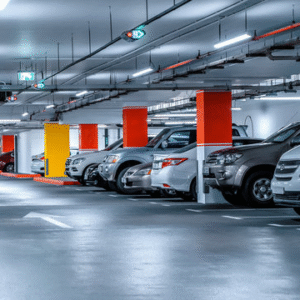When it comes to shed installation in Central Texas, many homeowners face a tough decision: build it themselves or hire a professional. While both approaches can lead to a functional and attractive shed, the process, cost, and results can vary greatly. Factors like regional climate, available tools, construction experience, and long-term durability all play a part in making the right choice. This guide dives into each method, giving you the insights needed to choose the best path forward for your backyard investment.
Introduction to Shed Installation in Central Texas
Shed installation in Central Texas is becoming increasingly popular as homeowners look for practical ways to expand usable space on their property. Whether it’s for storing lawn equipment, creating a backyard office, or building a space for hobbies, a shed offers both utility and added property value. But unlike mass-market solutions or kits designed for general use, the installation process in Central Texas requires specific considerations, from soil type to weather resistance. Understanding what’s involved in shed building in this region is key to ensuring a long-lasting structure that stands up to local conditions.

The Rising Popularity of Backyard Sheds
More and more Central Texas residents are turning to backyard sheds not just as utility storage, but as creative extensions of their living space. With housing costs on the rise, sheds offer an affordable solution to space limitations. They can be custom-designed for functionality, turned into home offices, gyms, art studios, or even tiny homes. The flexibility of these structures makes them ideal for modern living, especially for those working remotely or needing additional space for family activities.
Why Central Texas is a Unique Place for Shed Installation
Central Texas is known for its hot summers, variable rainfall, and shifting clay soils—all of which can affect how well a shed holds up over time. Building a shed here requires more than just good materials; it requires an understanding of how local weather and terrain interact with building structures. For example, a poorly built foundation can shift dramatically after a few heavy rains if not properly leveled or supported. Additionally, choosing heat- and UV-resistant materials is essential to prevent premature aging and warping. These factors make it important to approach shed installation with a regional mindset, whether you’re going the DIY route or hiring professionals.
Understanding the Basics of Shed Installation
Shed installation might seem straightforward, but there are many layers involved. From selecting the type of shed that fits your space and needs, to laying the right foundation and applying finishing touches, each phase of the build requires careful planning. A good understanding of the process helps you decide whether you’re prepared to manage it yourself or if it makes more sense to bring in expert support.
Types of Sheds Commonly Installed
In Central Texas, the most common shed types include gable, barn-style, lean-to, and custom-designed models. Gable sheds offer classic appeal and balance well with most residential architecture. Barn-style sheds provide extra overhead storage and are ideal for those who need space for tools and supplies. Lean-to sheds work well in narrow spaces or along fences and walls. For homeowners with unique needs, custom sheds can be designed to match personal tastes, landscaping styles, or intended use cases.
Key Components Involved in Shed Installation
Building a shed involves more than just walls and a roof. It starts with a solid foundation—typically made of concrete, gravel, or treated lumber. The framing must be precise to support the structure under all weather conditions. Quality roofing, proper insulation, durable siding, and weather-resistant windows and doors are all vital. These components not only affect the shed’s durability but also its appearance and resale value. Skimping on any part of the structure can lead to expensive repairs or complete rebuilds later on.
Pros and Cons of DIY Shed Installation
Taking on a DIY shed project can be rewarding for hands-on homeowners, especially those with prior construction experience. However, it comes with real challenges that shouldn’t be underestimated.
Benefits of Going the DIY Route
One of the biggest motivations for DIY shed installation is cost savings. Eliminating labor fees can significantly reduce the shed installation cost in Central Texas, making it a more budget-friendly option. You also gain full control over the build process, which can be fulfilling for those who enjoy working with their hands. From selecting materials to customizing the layout, you’re free to bring your vision to life at your own pace. Plus, building something from the ground up often brings a strong sense of accomplishment.
Common Pitfalls and Challenges
While DIY projects can be empowering, they can also be overwhelming. Misjudging the scope of the project, underestimating material needs, or lacking the right tools can lead to delays and frustration. Mistakes during the framing or foundation phase can jeopardize the entire build, causing structural problems over time. Additionally, unfamiliarity with local permitting regulations may result in legal headaches. Without a strong construction background, these obstacles can quickly turn your DIY project into a costly redo.
Benefits of Hiring a Professional for Shed Installation
Hiring a professional offers peace of mind, especially in a region like Central Texas where local factors influence build quality. From start to finish, professionals manage the entire process efficiently and effectively.
Expertise and Efficiency
Professional shed builders have experience with a wide range of projects and understand how to navigate Central Texas’s unique environmental challenges. Companies have regional expertise that helps ensure long-term durability and compliance with local codes. They also have access to commercial-grade tools and proven construction techniques, which allows them to complete projects much faster than the average homeowner could on their own.
Quality Assurance and Warranties
Perhaps the biggest benefit of hiring a pro is the assurance of quality. Most professional builders offer warranties on both labor and materials, providing added protection for your investment. If something goes wrong down the line, you’re covered. In contrast, DIY projects come with no such guarantees, which means fixing mistakes falls solely on your shoulders—both physically and financially.
Tools and Materials for DIY Shed Installation
If you’re leaning toward the DIY route, it’s important to plan ahead and gather the right resources. Doing so can save you time, money, and future headaches.
Must-Have Tools
A successful shed installation requires a solid set of tools. Essentials include a power drill, circular saw, level, tape measure, ladder, and a framing hammer. Depending on your design, you may also need specialized tools like a miter saw or roofing nailer. Renting or buying high-quality tools is crucial to ensuring accuracy and safety throughout the build process.
Sourcing Quality Materials
Choosing the right materials is equally important. Pressure-treated lumber is recommended for framing and flooring due to its resistance to moisture and pests. For roofing, asphalt shingles or metal panels are ideal in Central Texas’s climate. Siding options like T1-11 or LP SmartSide offer weather resistance and aesthetic appeal. Investing in high-quality materials upfront helps avoid repairs and replacements down the line.
Timeline: DIY vs. Professional Installation
Time is an important factor in choosing between DIY and professional installation. It impacts not only your schedule but also the overall cost and convenience of the project.
How Long Does Each Method Take?
DIY shed installation typically takes several weekends to complete, depending on the size of the shed and your level of experience. If unexpected issues arise, the timeline can stretch even further. On the other hand, professional builders can often complete a standard shed within a few days. For custom designs, it might take a week, but it’s still significantly faster than the DIY alternative.
Managing Your Schedule and Expectations
Homeowners need to be realistic about their availability before starting a DIY build. Between work, family obligations, and weather delays, finishing a shed can take much longer than anticipated. Hiring a pro allows you to stay focused on your day-to-day responsibilities while the experts handle the hard labor and logistical details.
Durability and Maintenance Comparison
The longevity of your shed depends not only on the materials used but also on the quality of installation and ongoing maintenance.
Long-Term Implications of Each Method
A shed built by professionals is more likely to last decades, thanks to precision workmanship and proper reinforcement. DIY sheds can last just as long if built correctly, but small errors in alignment or sealing can lead to structural problems over time. Moisture intrusion, foundation shifting, or poor insulation are all risks that can be minimized with professional input.
Preventive Maintenance Tips
Regardless of who builds your shed, consistent maintenance is key. Inspect the roof annually for damage, ensure proper drainage around the base, and reapply paint or sealant every few years. Keeping the shed clean and ventilated also prevents mold, pests, and wood rot—prolonging its lifespan and usability.
Customer Support and Post-Installation Services
Professional shed builders don’t just walk away after installation—they provide ongoing support and peace of mind that DIY simply can’t match.
What to Expect from Professional Services
From the initial consultation to the final walkthrough, professionals provide a streamlined experience. They help you with permitting, design modifications, and material selection, ensuring the entire process meets local regulations and your personal needs. Professional Shed builders in Texas and nearby areas even offer site prep services and post-installation clean-up.
Warranty, Repairs, and Ongoing Support
A major benefit of professional shed installation is post-sale support. Many companies offer warranties on their work and provide ongoing repair services if something goes wrong. This can include fixing roof leaks, realigning doors, or reinforcing foundations. Knowing that help is just a phone call away adds long-term value to your investment.




